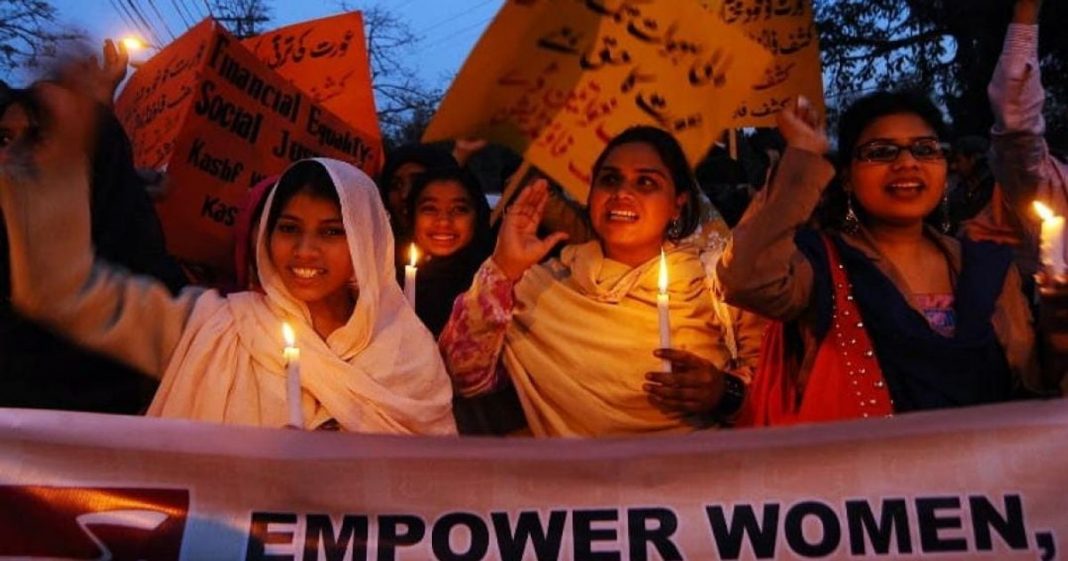Just about 25 years ago, the fourth world conference on women was held in Beijing wherein thousands of delegates had landed. It was the largest ever-international gathering to discuss cum advance women’s equality and their human rights as well.
The aim of the conference was to get a strong commitment from leaders of the world on the strategies to advance and upgrade women’s rights. Nearly a month, the Beijing Platform for Action was adopted by 189 countries in a unanimous manner to ring up the curtain to endorse women’s equality and empowerment on which nation-states agreed they would work together.
Today over 30,000 girls are married off every day before they reach the age of 18 years; that proportion stands roughly as one girl gets married in every two seconds.
The concluding text of the Beijing Platform for Action (BPA) secured the significant commitments to deal with women’s inequality, and it was publicized as a great triumph in receiving the unanimity on such possibly conflict-ridden issues such as rights capable of reproduction, women and land ownership in conflict resolution. The platform also had added that violence against women is not a “domestic” issue to be dealt with at the family level, but it is rather a globally intractable phenomenon.
Little or no progress
In a report, UN Women, the United Nations body devoted to women empowerment and gender equality, said progress since Beijing has been not smooth, and warned gender equality lags until now. Moreover, it added that progress on the access for women to paid work has ground down to a surcease for donkeys’ years. This goes through the ceiling when people begin talking the hind leg off a donkey.
The report brought down the curtain on the final determination for women to keep on shouldering the bulk of domestic work and unpaid care, howbeit one in five women (18 per cent) still faces violence from her intimate partner every year. In Punjab (province of Pakistan) a survey on 1000 women was run, which resulted that about 35% women admitted in the hospitals were reported being beaten by their husbands, and about two women every day were reported being burned as the result of domestic violence.
Read more: Here is why chemical castration will not help end sexual violence against women
New technologies new forms of violence
On the flip side, new technologies, nowadays, ignite new forms of violence, such as cyber-bullying, against which the policy solutions are mostly absent. Around 32 million girls are still out of schools, and men counterparts, hitherto, are in the command of three-quarters of parliamentary seats across the globe. This is how large the women’s inequality prevails at this juncture.
Today over 30,000 girls are married off every day before they reach the age of 18 years; that proportion stands roughly as one girl gets married in every two seconds. As per the report released this year by UNICEF, South Asia and the Sub-Saharan Africa are the homes to 37% of these child marriages.
There are still more than 600 million women alive today who are married in their early ages, struggling on a variety of social cum health problems.
The concluding text of the Beijing Platform for Action (BPA) secured the significant commitments to deal with women’s inequality, and it was publicized as a great triumph in receiving the unanimity on such possibly conflict-ridden issues such as rights capable of reproduction, women and land ownership in conflict resolution.
Little animosity and larger collaboration
Possibly the greatest triumph of the Beijing conference was to advance and promote women’s human rights by means of many-sided diplomacy. With over 170 nation states partaking, there was, to my surprise, little animosity and larger collaboration to get the still inspiring and world-shattering Beijing Platform for Action. This is the potential challenge in a world wherein the multilateral leadership has seriously been destabilized.
One stated goal of the conference was to achieve women’s empowerment. Those empowered by the conference now carry a torch to enlighten the realization of the radical freedom of all women and their guarded rights. With this reference, India has also given her word, though, to increase the rate of investment in education with special focus on the girls and women as well, Pakistan still lags behind in this sprint. According to the Global Gender Gap Index Report released by the World Economic Forum (WEF) in 2018, Pakistan was 148th in 149 countries – the second-worst country in terms of gender equality all across the globe. It is obvious that with the exclusion of just about 100 million women, Pakistan can never reach the pinnacle of peace, progress, and stability.
Read more: Dr. Sania Nishtar, Mahira Khan among BBC’s 100 Most Influential Women
Although the said conference was held for the fourth time to set the strategic goals to achieve gender equality and women empowerment in 12 different critical areas, all these areas are still put to the torch.
A renewed global commitment is needed where the state itself, NGOs, individuals, and agencies should cooperate to add force to endeavors to achieve the promise of Beijing that is common here in the country – Pakistan. Because the gender parity at multiple fronts such as political, educational, representative, and economic makes change and prosperity inevitable.
Rameez Mahesar is a member of the Editorial Board for a Russian Research Journal, Bulletin of Science. He can be contacted at rameezalimahesar@gmail.com. The views expressed in this article are the author’s own and do not necessarily reflect the editorial policy of Global Village Space.














